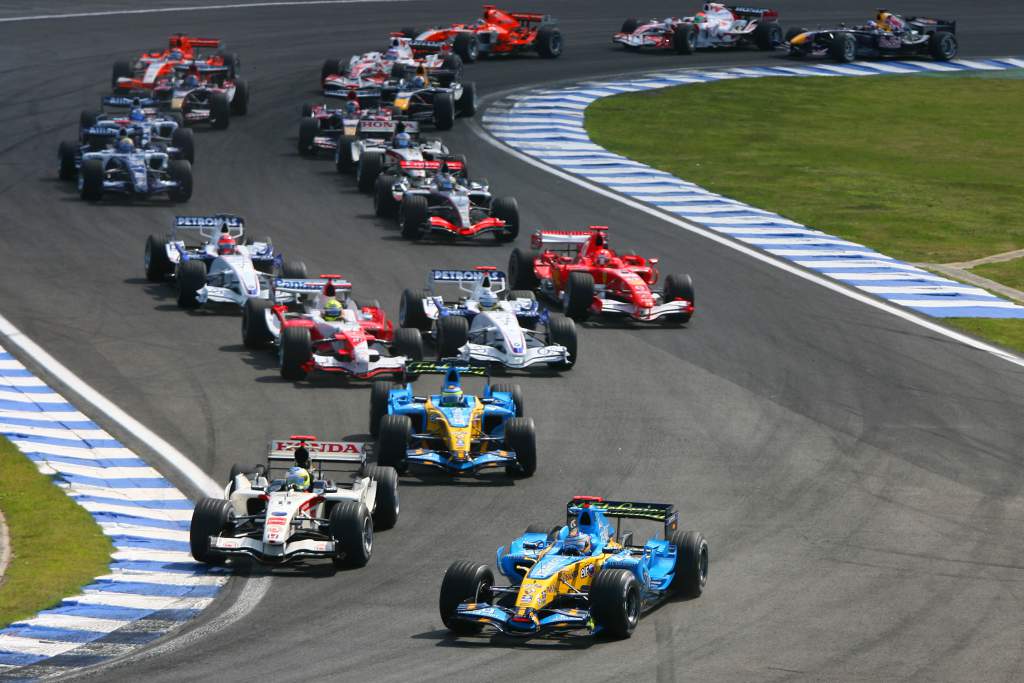Up Next

With Lewis Hamilton having never missed a grand prix in his Formula 1 career up to now, the Sakhir GP will be the first race without him on the grid since the end of the 2006 season.
There have been 265 grands prix in the 14 years and 1.5 months since then, and the F1 world has changed dramatically. But certainly not beyond all recognition.
Here’s a reminder of what’s changed since an F1 race last started without Hamilton, and what hasn’t.
ALONSO HAD JUST USURPED SCHUMACHER
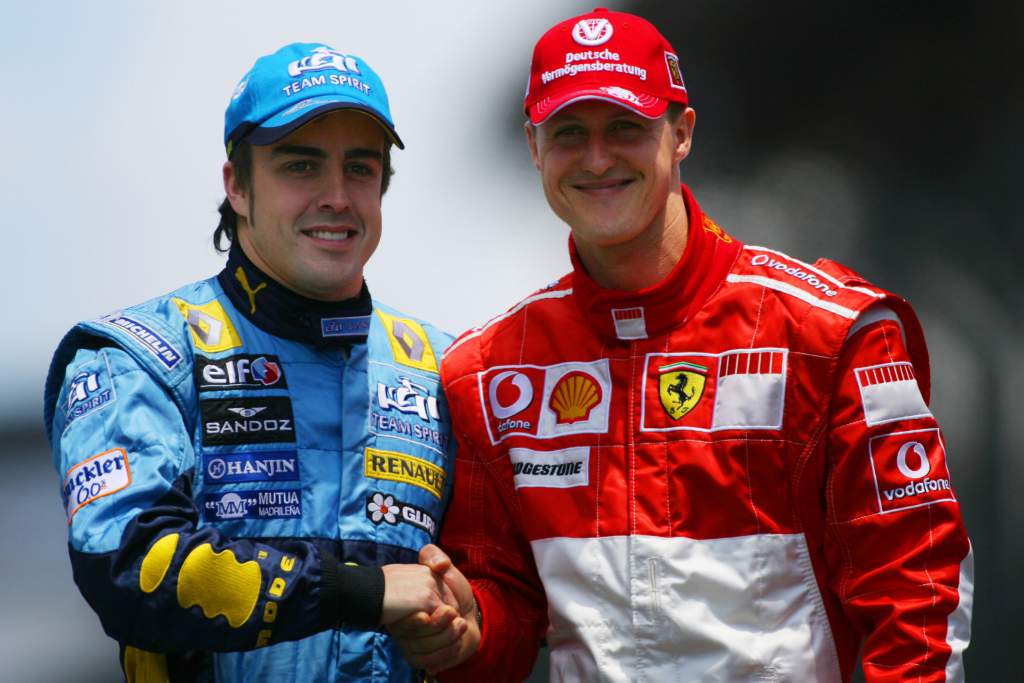
Michael Schumacher had defined F1 at the end of the 20th century and the start of the 21st, And in the first half of the 2000s, there were times when it was hard to imagine him and Ferrari ever getting deposed, just as is the case with Hamilton and Mercedes now.
Yet across 2005/06 Schumacher was not only usurped as the top dog on track, he was eased out of the Ferrari team he’d led back to the top.
The swing from crushing Ferrari domination in 2004 to a Fernando Alonso/Renault title in 2005 was helped by Michelin mastering the year of no in-race tyre changes better than Bridgestone. But Alonso was also inflicting the kind of blows on Schumacher that no one since Mika Hakkinen had proved able to – fending him off at Imola, passing him around the outside of the 130R at Suzuka.
That led to the sole Schumacher vs Alonso title fight in 2006, in which Schumacher had momentum as he drew level late on, only for his Suzuka engine failure to mean that all Alonso had to do to be champion at Interlagos was score a single point, and it was win or bust for Schumacher.
A fuel pressure problem in qualifying left Schumacher 10th on the grid, and an early puncture really made it mission impossible.
The Ferrari/Bridgestone package had dominant pace – Schumacher’s team-mate Felipe Massa took a commanding home win – and Schumacher was able to come back from a very distant 19th to fourth. But Alonso’s second made him a double champion in his final race for Renault before leaving for McLaren, where he was heading as team leader backed up by GP2 champion and F1 rookie Hamilton.
And F1 thought that charge to fourth would be Schumacher’s final farewell, as the record seven-time champion and 91-time race winner had announced his retirement a month earlier.
It had been Alonso who usurped him on track, but Raikkonen who effectively ended his (first) career. Anticipating that its superteam might break up with Ross Brawn leaving and Jean Todt and Schumacher both considering stepping away, Ferrari tried to futureproof itself by signing Raikkonen for 2007 and told Schumacher that if he stayed it would be at Massa’s expense and as equal number one with Raikkonen.
Schumacher decided against that and walked away from F1… for a while.
ROSBERG AND KUBICA WERE THE RISING STARS
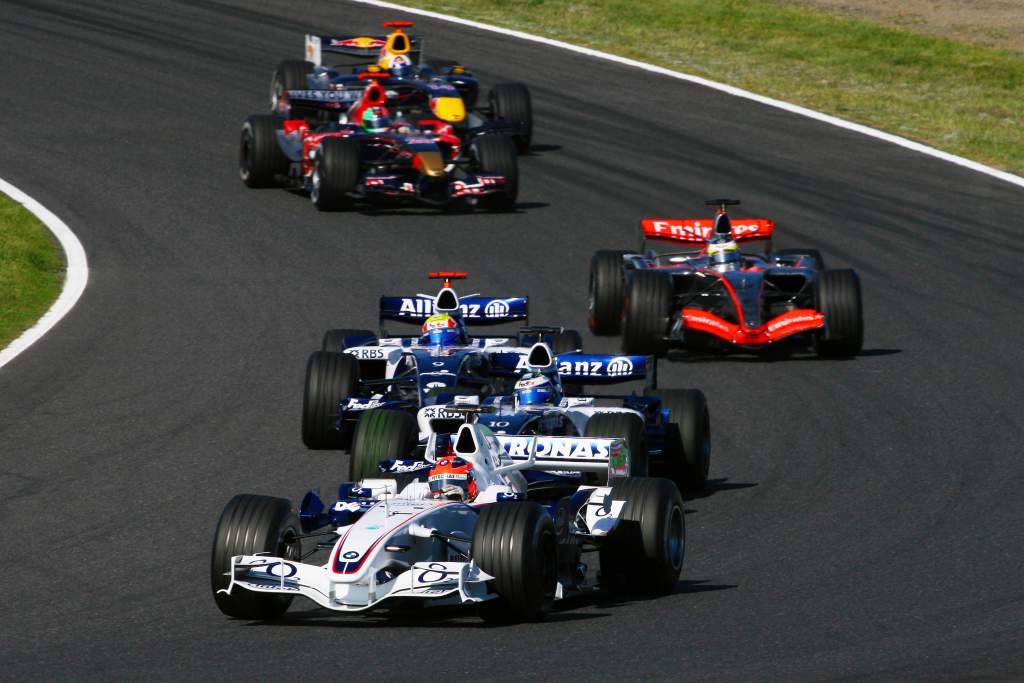
While Hamilton was beating Nelson Piquet Jr to the GP2 title, and a very young Sebastian Vettel was causing a stir with his Friday practice appearances for BMW, the most exciting new talents on the 2006 F1 grid were Nico Rosberg and Robert Kubica.
They’d arrived from opposite ends of the ‘hype’ spectrum. Son of 1982 world champion Keke, Rosberg had first tested a Williams F1 car when only 17, had started his car racing career with a runaway German Formula BMW title, then overcame Heikki Kovalainen to become the first GP2 champion in 2005.
He graduated to F1 with Williams amid talk of how hugely impressed the team had been with his intellect and approach, and he backed it up with pace and racecraft as he set fastest lap on his F1 debut while recovering from a first-corner tangle to finish seventh in Bahrain.
But he and Williams found it hard to maintain that momentum, and Rosberg – who only had one other points finish in 2006 – ended his rookie year by taking out team-mate Mark Webber on the first lap at Interlagos then having a huge crash due to damage he didn’t realise he’d incurred.
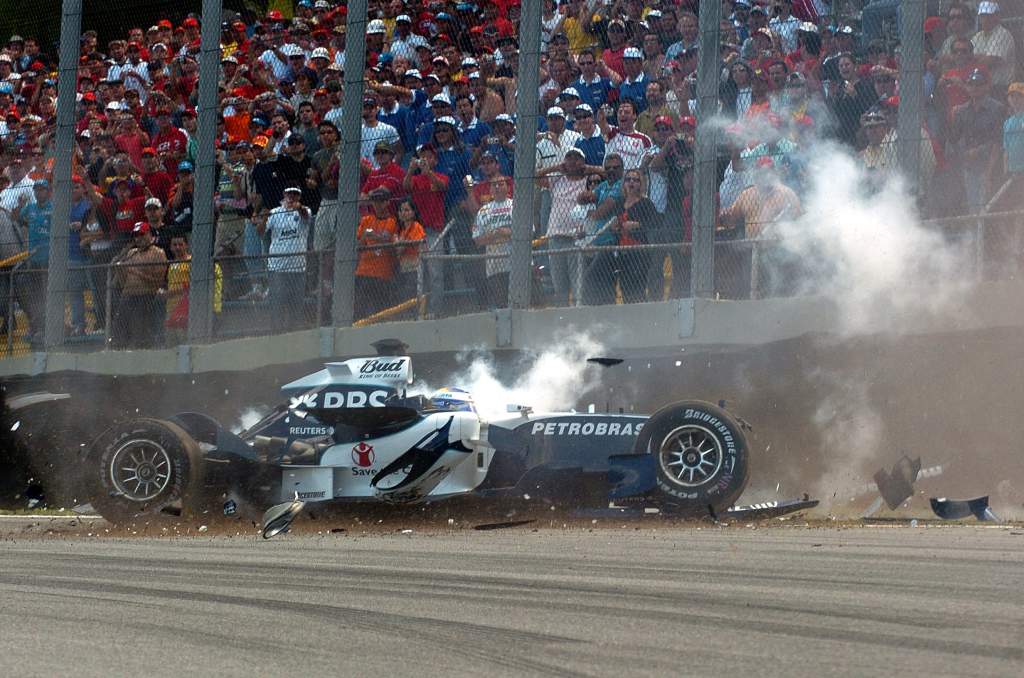
Kubica’s rise took place under the radar, with plenty of people rating him very highly from karting and his early years, but few opportunities to really shine in an injury-disrupted junior single-seater career spent largely with low-key teams. Two runner-up finishes in the Macau Grand Prix were the best evidence of what Kubica could do.
He then secured a Renault F1 test by winning what was then called the World Series by Renault in 2005, and his performance convinced BMW to swoop in and give him a third driver contract for 2006.
By mid-season, Kubica’s test and Friday practice pace led to him replacing 1997 world champion Jacques Villeneuve in a race seat. He finished seventh in his debut in the wild Hungarian GP before being disqualified because his car was underweight, but made up for that with an Italian GP podium in only his third F1 start.
Rosberg had secured all the early-season headlines, but by Interlagos it was Kubica who looked like the best future hope.
MERCEDES WAS HONDA, RED BULL WAS AN UPSTART
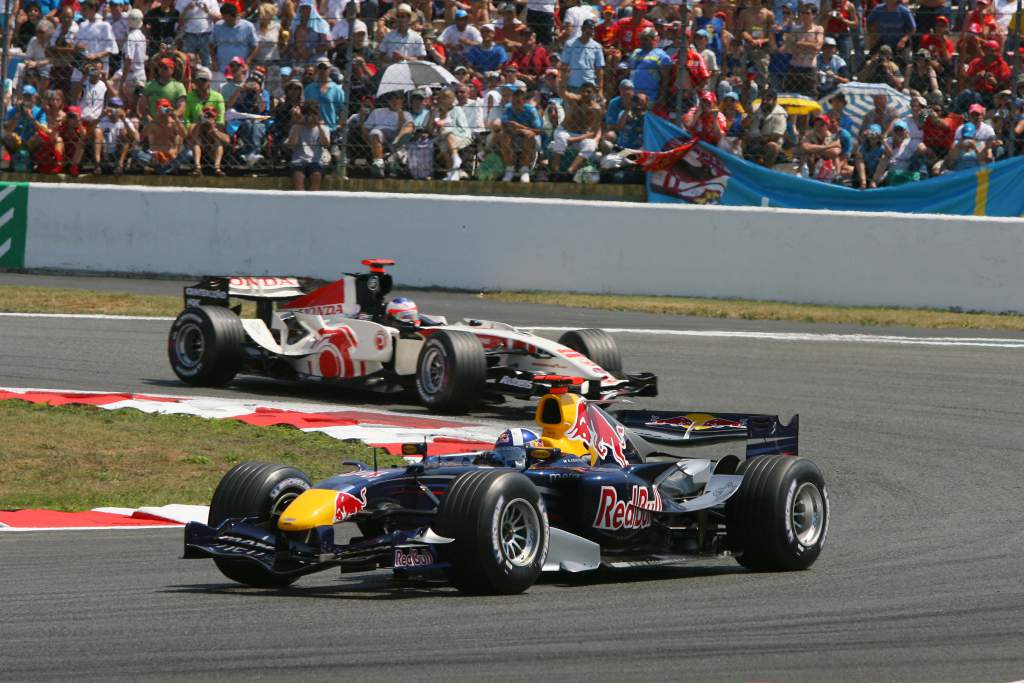
The 2006 season had definitely been a changing of the guard in terms of teams as the BAR, Jordan and Minardi names all vanished.
BAR’s transition to a works Honda team – officially completed in 2006 – had long been in progress.
Having gone from the huge promise of 2004 to pain and controversy in 2005, what was now Honda steadied itself with fourth in the constructors’ championship in ’06 and a famous Jenson Button win in Hungary.
It was rapidly downhill for Honda across 2007/08, before its remarkable championship-conquering rebirth as Brawn GP and then the Mercedes takeover that led to the oufit becoming the dominant force of an entire era.
Whereas now Honda’s powering Red Bull (and about to leave F1 again), it was Ferrari horsepower in the back of the RBR machines back in 2006.
This was only the second year of the Red Bull team’s existence after its acquisition of Jaguar, and it achieved its first podium with David Coulthard in an attritional Monaco GP.
But overall it was still a midfielder finding its feet. Coulthard qualified only 19th at Interlagos and retired early with gearbox failure. Team-mate Robert Doornbos had to start last due to a practice engine failure and could only finish 12th behind Takuma Sato’s Super Aguri and Scott Speed’s Toro Rosso. Red Bull was counting on the arrival of Webber and Renault power for 2007 to improve its form.
This was the first year of two Red Bull teams in F1, with Toro Rosso – now AlphaTauri – created via the purchase of Minardi.
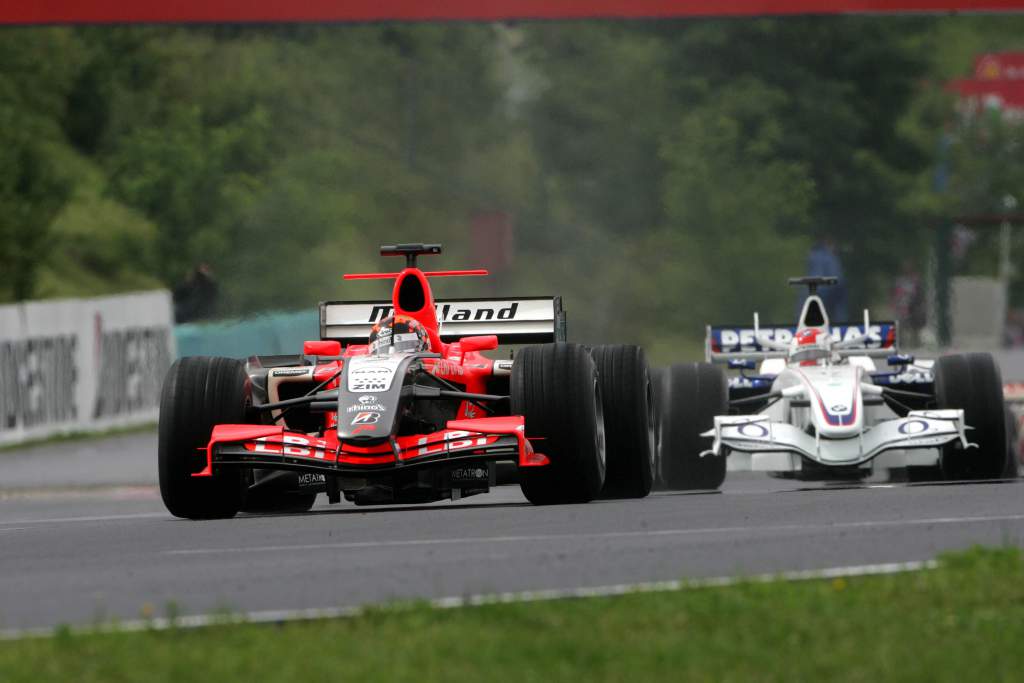 What are now Racing Point and Alfa Romeo were also on the 2006 grid under different identities (pictured above).
What are now Racing Point and Alfa Romeo were also on the 2006 grid under different identities (pictured above).
The ex-Jordan team had been Midland/MF1 and then already became Spyker, and had even dropped behind Super Aguri. It had to wait another year before Vijay Mallya transformed it into Force India and got it back on track.
Alfa was BMW Sauber, 2006 being the first year of BMW’s own works programme after it split with Williams and took over Peter Sauber’s team. Beating the consistently underperforming Toyota to fifth in the constructors’ championship was a solid start.
THERE WAS A TYRE WAR
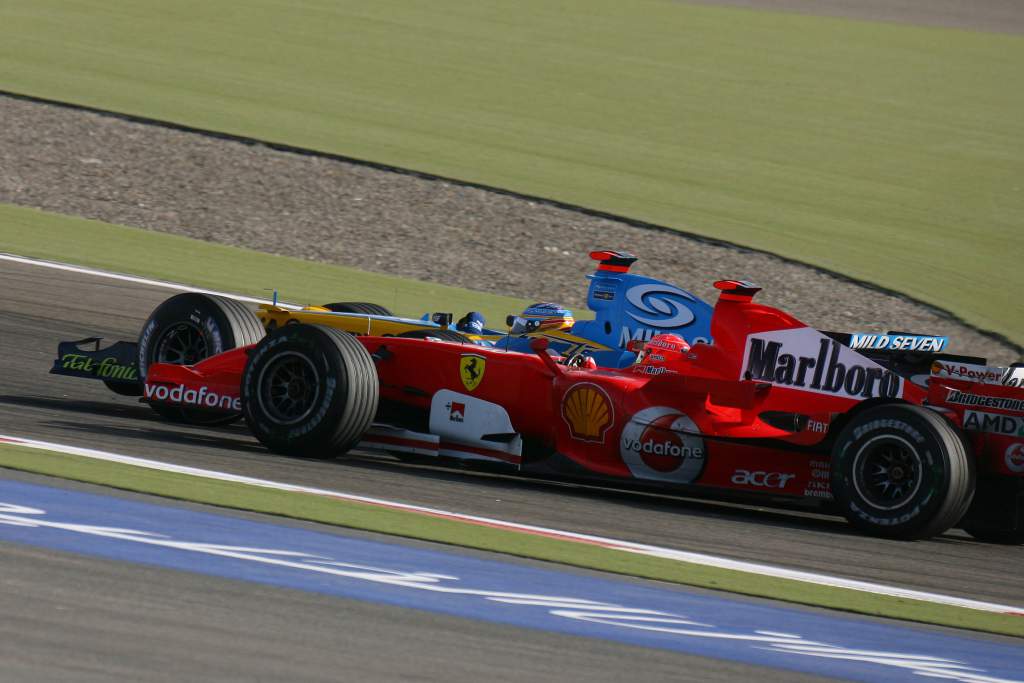
Hamilton arrived in F1 just as its wildest excesses were being curtailed. His grand prix debut was the first race of a standardised single tyre supply (from Bridgestone) after six years of a fantastic all-out tyre war between Bridgestone and Michelin.
The tyre war and the unrestricted engines made 2006 the last F1 season of truly multi-dimensional technical competition. In its subsequent simplification as an attempt at cost control, F1 was dumbed down.
It was still the most sophisticated and greatest series in the world but it definitely lost something that’s never been fully recovered.
Hamilton’s sensational rookie form in ’07 was the story which most deflected away from that reality, but F1 had attacked the symptoms rather than the cause.
The tyre war was bang-central to the fantastic title fight of ’06 between Alonso and Schumacher and the volatility in form between them was driven to a great extent by the Michelin/Bridgestone contest.
F1 HAD SEVEN ENGINE SUPPLIERS
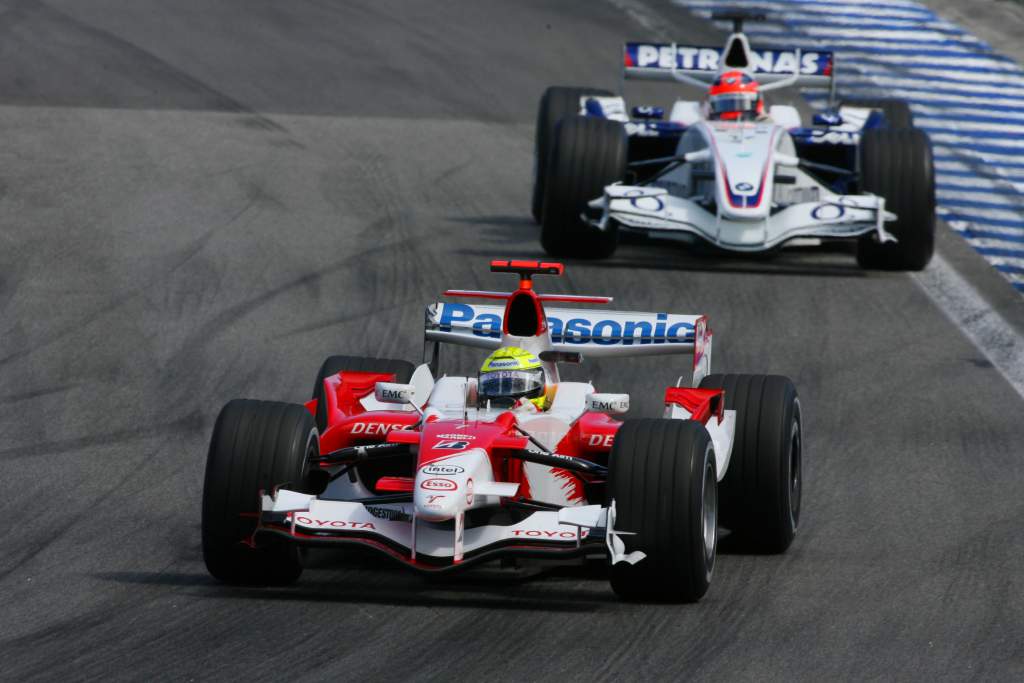
At the end of 2006 F1 was still enjoying the last of its commercial glory days, which had been running since the late-90s when the automotive manufacturers had decided they couldn’t afford not to be there.
So in addition to the current four (Mercedes, Ferrari, Renault and Honda), we also had BMW and Toyota with their own works teams.
In addition, Cosworth was present as a customer engine supplier (to Williams) with a motor that was absolutely competitive in terms of power but perhaps suffered a little on reliability through the lesser development budget.
These manufacturers had all stuck with F1 as it had transitioned from V10 3-litre to V8 2.4-litre formula. Indeed in 2006 there was still the ghost of the V10 era in that Toro Rosso was running an old V10 Cosworth strangled by regulation down to V8 power levels.
This was the last season of unrestricted revs and BMW set a new record of 21,000rpm before the 2006 season was out. By the time Hamilton got to try F1, a limit of 19,000rpm was in place.
THE END OF TOBACCO ADVERTISING
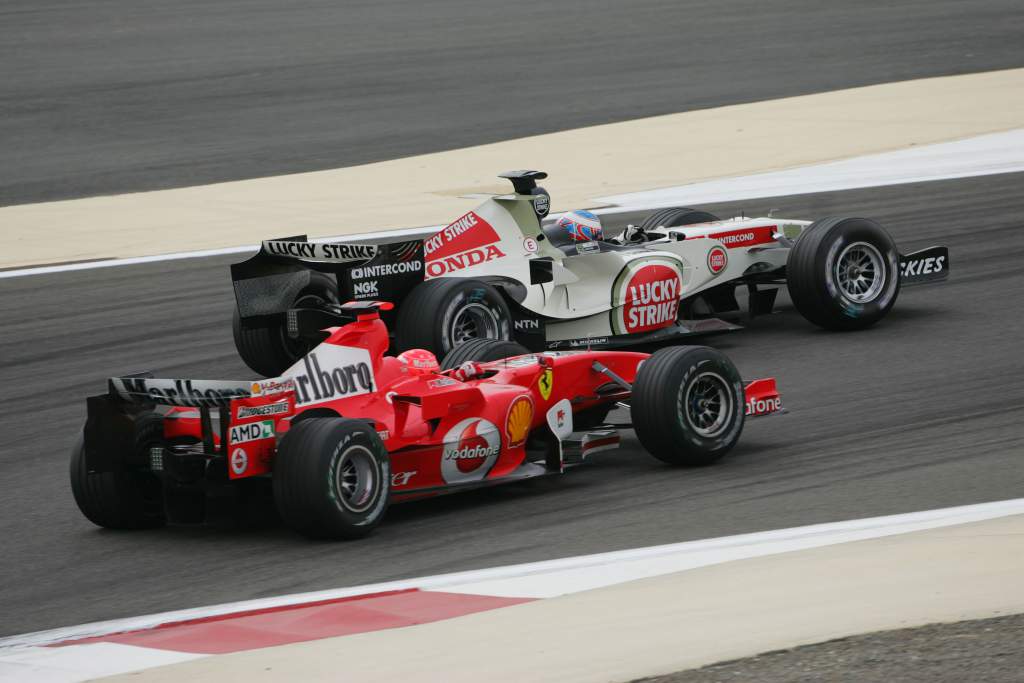
Formula 1 teams had relied on tobacco sponsorship for generations, but 2006 marked the end of an era. Tougher restrictions on tobacco advertising were already being felt by this point, but three teams on the grid – Renault, Ferrari and Honda – still relied on it through title sponsorship deals.
By the start of Hamilton’s career the following season, only Ferrari was still associated with a tobacco brand, but by that stage there were very few races where it was allowed to run the logos.
In the years that followed it gradually came under increasing scrutiny for its disguised logos as well, which have since disappeared entirely. Ferrari still receives a significant amount of money from Philip Morris International despite the lack of branding, although the firm’s ‘Mission Winnow’ initiative has appeared on its cars at times in recent years.
That deal has been the subject of criticism from anti-tobacco groups – as has McLaren’s recent tie-up with British American Tobacco to promote its ‘A Better Tomorrow’ platform.
KNOCKOUT QUALIFYING WAS STILL A NOVELTY
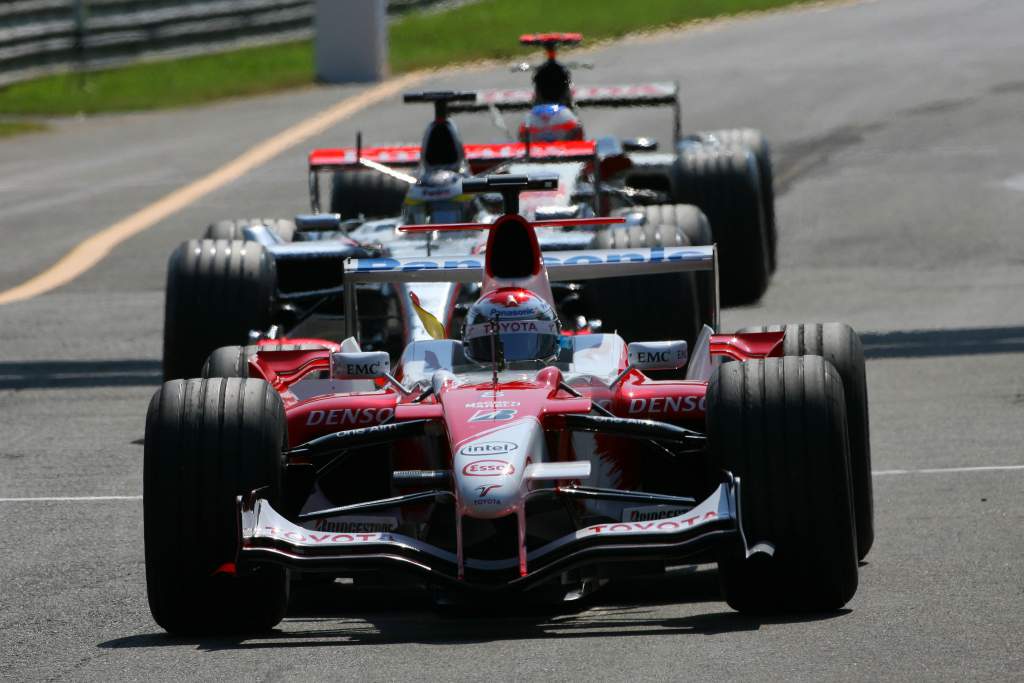
Single-lap qualifying with first-stint race fuel had been a popular shake-up for 2003, but was still felt to be an imperfect system. And the early-2005 experiment with aggregated times from two one-shot sessions – one on ‘qualifying’ fuel, one with a race fuel load – across two days was an over-complicated failure.
So for 2006, there was a new innovation: knockout qualifying. A novelty then, it’s still in place in almost the same format today, with most of the tweaks around session lengths and cut-off points (let’s ignore the 2016 dalliance with eliminated drivers at 90-second intervals).
The Q1/Q2/Q3 knockout format was an instant hit overall, but took time to fine-tune. The insistence on keeping the first-stint race fuel element but for the Q3 field only meant the fastest cars suddenly started going very slowly in Q3 as they tried to burn off enough fuel to be light for their crucial final laps. Miscellaneous minor tweaks failed to eradicate that embarassing situation until mid-race refuelling was dropped fully in 2010.
THE CALENDAR WAS QUITE FAMILIAR
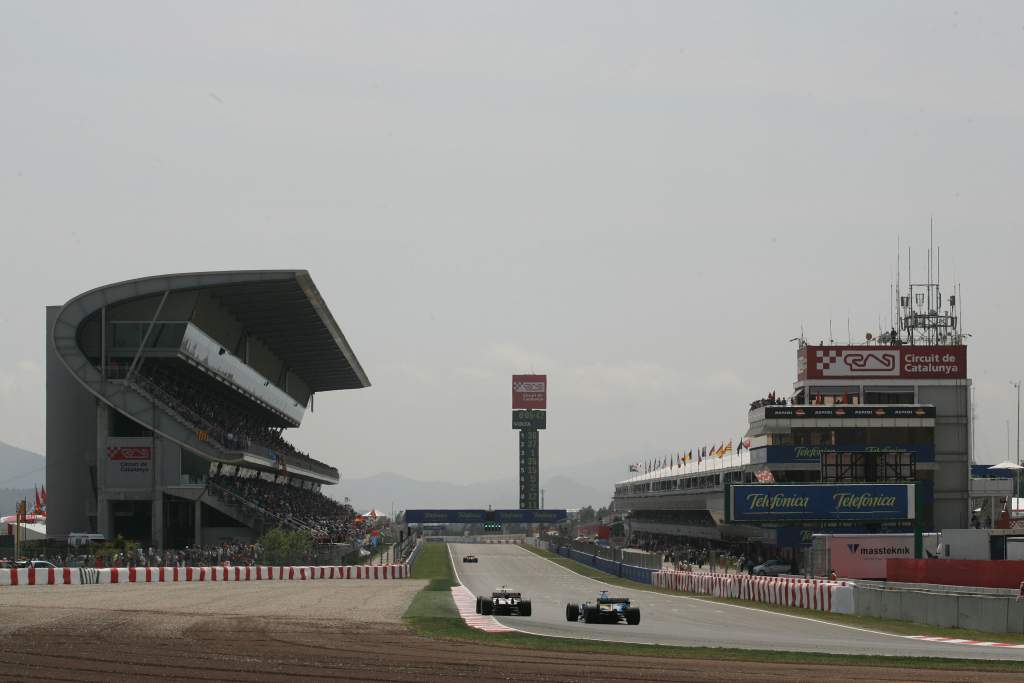
Surprisingly, eight of the 14 venues used in Formula 1 in 2020 were also on the calendar in 2006 – but in three cases only because of the coronavirus pandemic calendar changes.
Imola, Istanbul Park and the Nurburgring all made temporary reappearances this year, having long been absent from the calendar.
Conversely 2006 venues Melbourne, Monaco, Montreal, Suzuka and Interlagos all missed out this year only due to the COVID-19 situation.
The 2006 season opened in Bahrain for the first time, as Sakhir hosted its third grand prix, but Yas Marina and Sochi hadn’t even been built yet.
The oddest anomaly was that Spa featured this season but not in 2006. Building work in the area meant it had one of its temporary absences that year.
MASS DAMPERS WERE THE LATEST TECH ROW

The mass damper pioneered by Renault was a key technical innovation during the 2006 season before it was banned after the 11th race of the year at Magny-Cours.
The mass damper was used both at the front and the rear to minimise the vertical movement of the car by absorbing the impact of bumps and controlling the pitch.
This was achieved by suspending a relatively small mass, weighing just under 10kg, between springs that acted as a counterweight to the rest of the car. The mass damper for the front end of the car was a sealed unit mounted inside the nose.
The big benefit was that it evened out the variation of front tyre grip when braking and cornering, slightly reducing the theoretical maximum but raising the minimum grip. By evening out the fluctuations in pitch and boosting driver confidence, this was worth several tenths.
While Ferrari was running a mass damper, it couldn’t gain the same advantage thanks to the fact it ran the stiffer-sidewalled Bridgestone tyres. The mass damper was more beneficial when working with the more compliant Michelin rubber, leading to Ferrari lobbying against it.
The mass damper was banned as a moveable aerodynamic device as, while contained within the car, it did allow the car to be run in a narrower ride-height window and therefore permit the running of a more aggressive aero map.
ONLY TWO TEAMS HAD THE SAME BOSS
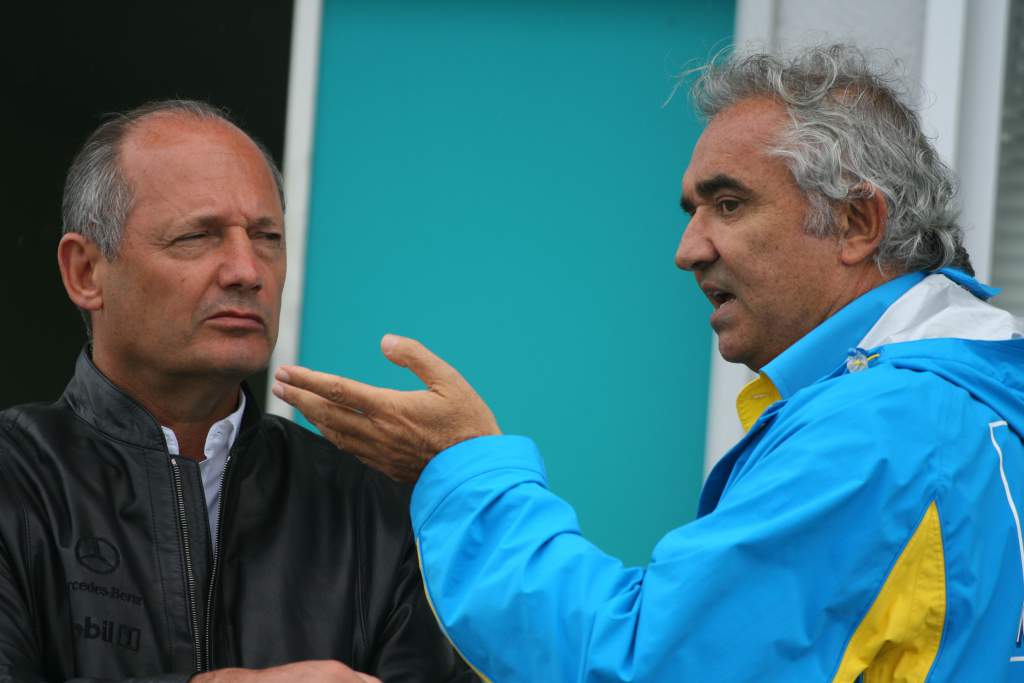
While there was once a time in Formula 1 when the team bosses appeared an immutable, immovable fact of F1, the only teams who have the same team principals today as they did in 2006 are the two owned by Red Bull.
Christian Horner took the helm of Red Bull Racing when it was formed, while Franz Tost headed up Scuderia Toro Rosso (now AlphaTauri) having left his trackside operations role with Williams.
They were among some of the more recent arrivals as team bosses – including Colin Kolles, who headed up what started 2006 as Midland F1, Mark Preston at Super Aguri and Mario Theissen at BMW Sauber.
There were also some of the big beasts of the era at the helms of teams, with Jean Todt leading Ferrari and old rivals Frank Williams and Ron Dennis still doing battle.
Williams was the last of these to step down, although realistically in the final years before Dorilton Capital bought the team his daughter, Claire, was the de facto team principal in her role as deputy.
TODAY’S STARS WERE BARELY EVEN KARTING
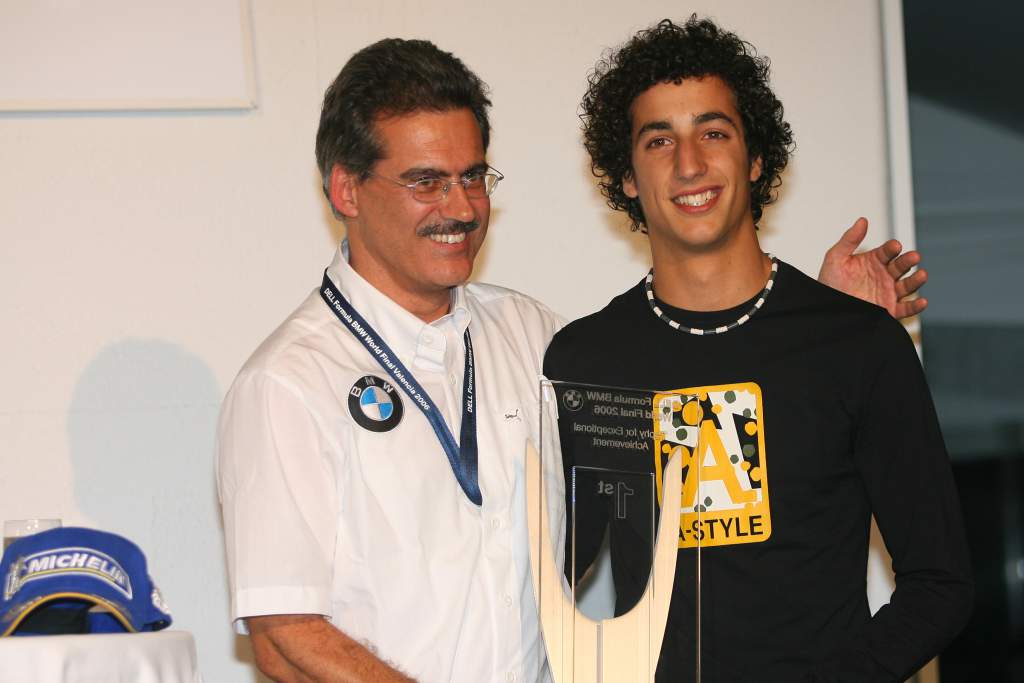
Remarkably, only five drivers on the current grid were racing cars at all back in 2006.
Of course, Alonso will return in 2021 but we’ll leave him aside for now. That leaves Kimi Raikkonen, who was 27-years-old in 2006 and had just finished fifth in his sixth season of Formula 1!
Hamilton famously won the GP2 championship in 2006 after five wins and 14 podiums in 21 races with ART, which helped leverage himself into a position for the McLaren seat the following year.
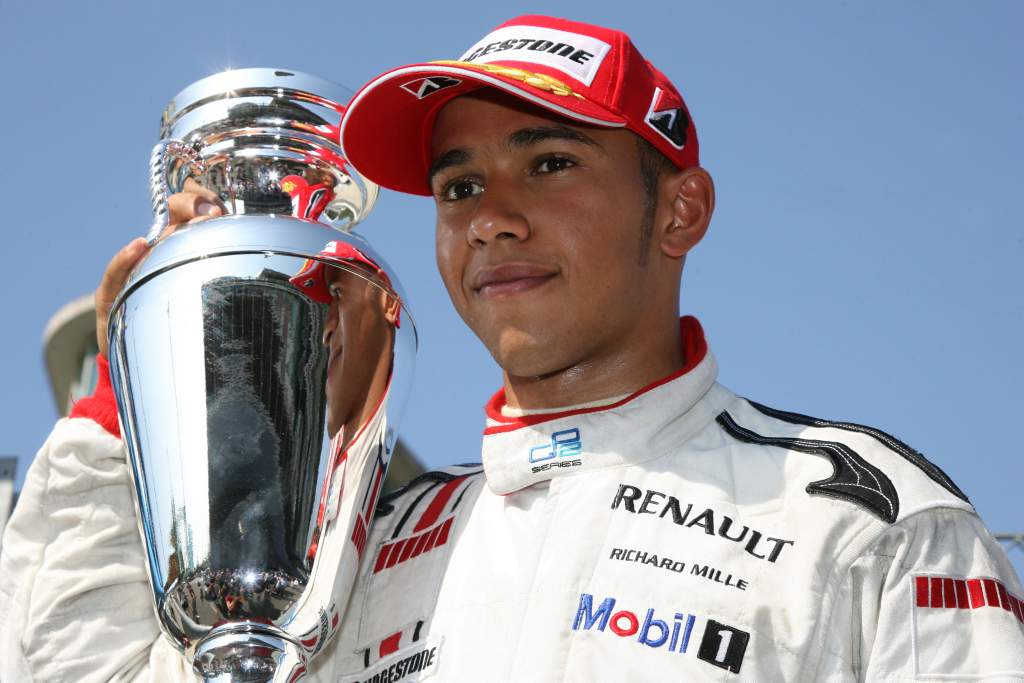
Sebastian Vettel – three years younger than Hamilton – finished second to Paul di Resta in the F3 Euro Series, while further down the order Romain Grosjean had finished 13th (although he won the championship the next year).
The other drivers racing now were in various Formula BMW categories as was the trend of the day. Sergio Perez finished 6th in the German-based version, while Daniel Ricciardo fared slightly better, finishing third in the Asian series – then a 19-event affair, won by future Le Mans 24 Hours winner Earl Bamber.
The rest of the F1 grid were karting or yet to hit double figures in terms of age. For example, Lando Norris was seven and it would be eight years before he won the Karting World Championship! If that’s not enough to make you feel old, nothing will.
Unless you’re younger than Norris, in which case, bravo!
How old each driver was back in 2006
Under 10: Lando Norris (7), Lance Stroll (8), George Russell (8), Charles Leclerc (9). Max Verstappen (9)
Under 15: Alex Albon (10), Pierre Gasly (10), Esteban Ocon (10), Nicholas Latifi (11), Antonio Giovinazzi (12), Daniil Kvyat (12), Carlos Sainz (12), Kevin Magnussen (14)
Over 15: Sergio Perez (16), Valtteri Bottas (17), Daniel Ricciardo (17), Sebastian Vettel (19), Romain Grosjean (20), Lewis Hamilton (21), Kimi Raikkonen (27).


